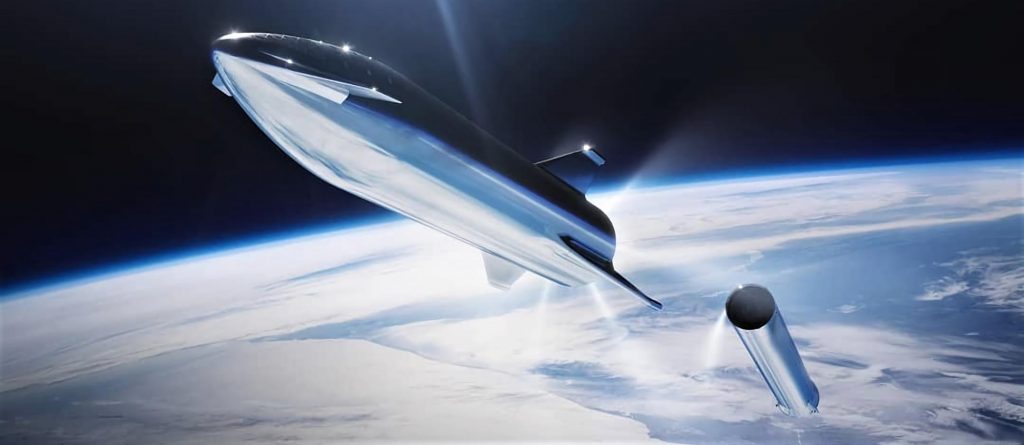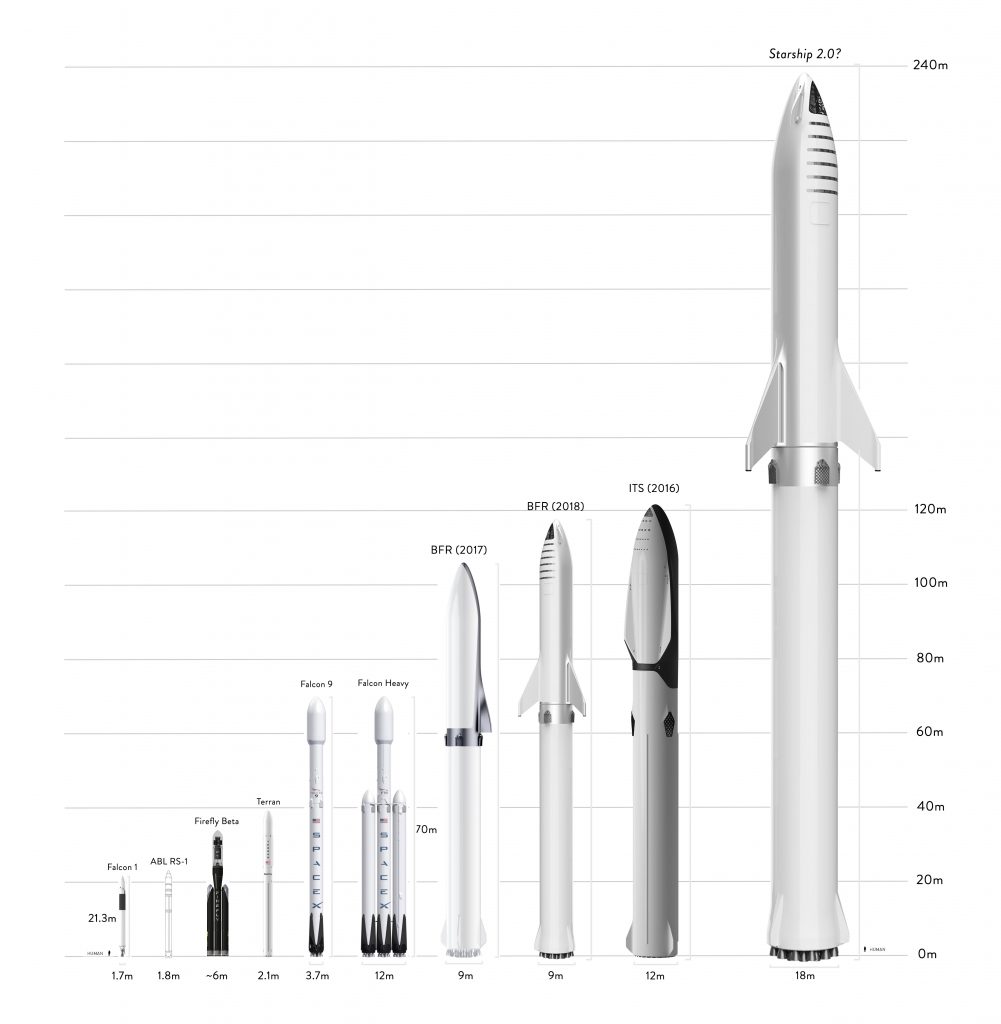Hinted at in a brief tweet on August 28th, SpaceX CEO Elon Musk says that SpaceX’s massive Starship and Super Heavy launch vehicle – set to be the most powerful rocket ever built upon completion – could eventually be followed by a rocket multiple times larger.
SpaceX is currently in the process of assembling the first full-fidelity prototypes of Starship, a 9m (30 ft) diameter, 55m (180 ft) tall reusable spacecraft and upper stage. Two prototypes – Mk1 and Mk2 – are simultaneously being built in Texas and Florida, respectively, while the beginnings of the first Super Heavy prototype has visibly begun to take shape at SpaceX’s Florida campus.
Once complete, Starship’s Super Heavy booster will be the single most powerful rocket booster ever built, standing at least 70m (230 ft) tall on its own and capable of producing as much as ~90,000 kN (19,600,000 lbf) of thrust with 30 250-ton-thrust and 7 200-ton-thrust Raptor engines installed. Assuming 31 throttleable 200-ton Raptors, Super Heavy’s minimum max thrust is a still record-breaking ~62,000 kN (13.7 million lbf).
In fewer words, a full Starship/Super Heavy ‘stack’ would be the tallest (~118m/390ft), heaviest (~5000 tons/11 million lbs), and most powerful rocket ever assembled.

And yet, despite its size, orbital-class rocketry in Earth gravity will almost never fail to benefit from more thrust; more propellant; more rocket. In light of this, CEO Elon Musk says that a theoretical next- next-generation SpaceX rocket – to potentially follow some years after Starship and Super Heavy – could be a full 18m (60 ft) wide, twice the diameter of its predecessors.
Many will recollect that doubling the diameter of a circle quadruples its area. Add in a doubling of height and a theoretical Starship 2.0 would have eight times the surface area and eight times the propellant tank volume, requiring roughly eight times as much thrust and making the vehicle eight times as heavy as Starship 1.0. Assuming that Starship’s successor retains its fineness ratio (height/width), an unlikely end result but still interesting to ponder, the vehicle would measure 18m (60 ft) in diameter and a terrifying ~236m (780 ft) tall, literally more than twice as tall as Saturn V. An 18m diameter would also make it the widest rocket ever built, with Saturn V’s S-IC first stage measuring 10m wide and the Soviet Union’s N1 ‘Block A’ first stage measuring an impressive ~17m in diameter at its widest point.
If the above assumptions are correct, a very rough estimate would peg Starship 2.0’s gross (fueled) mass at a gobsmacking ~40,000 metric tons (~90 million pounds). In the unlikely event that SpaceX would use the current generation of Raptor to power such a colossal rocket, the booster would need a bare minimum of 100+ Raptors just to lift off at all. Using Saturn V’s F-1, still the most powerful single-chamber rocket engine ever built, Starship 2.0 would need a minimum of 60+ engines to lift off.

For the time being, Starship and Super Heavy are plenty ambitious on their own, but it’s unsurprising to hear that SpaceX CEO Elon Musk already has some thoughts on what could follow that next-generation launch vehicle in the new decade. Still, it’s worth noting that quite possibly the craziest aspect of Starship – SpaceX’s utterly non-traditional attempt at rewriting the book on rocket manufacturing – could eventually make an 18m-diameter vehicle far more practical, assuming the company proves it’s methods can be used to build reliable, high-performance rockets.
Check out Teslarati’s newsletters for prompt updates, on-the-ground perspectives, and unique glimpses of SpaceX’s rocket launch and recovery processes.

<!–
–>
var disqus_shortname = «teslarati»;
var disqus_title = «SpaceX CEO Elon Musk says Starship could be followed by a dramatically larger rocket»;
var disqus_url = «https://www.teslarati.com/spacex-elon-musk-starship-the-next-generation/»;
var disqus_identifier = «teslarati-113105»;

